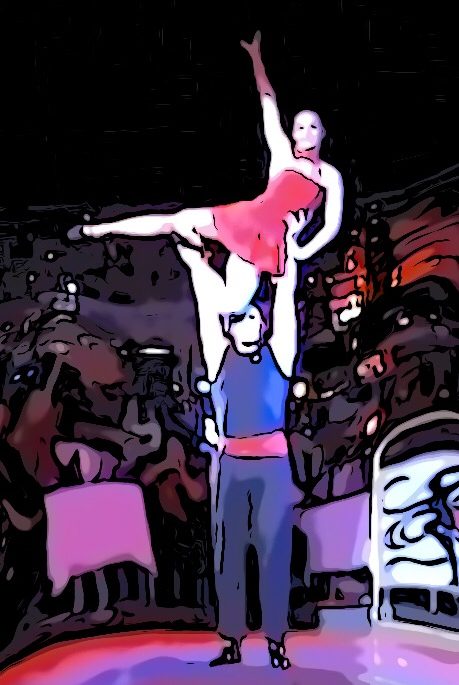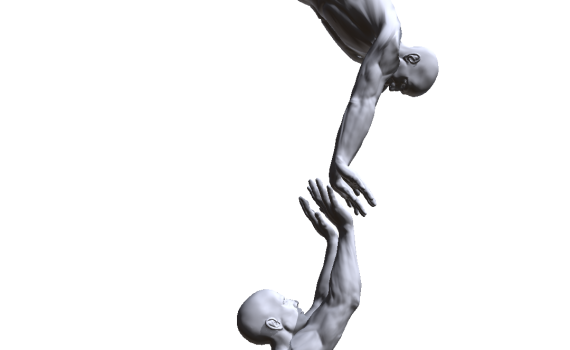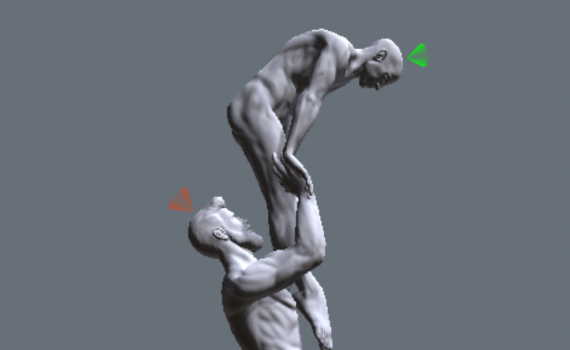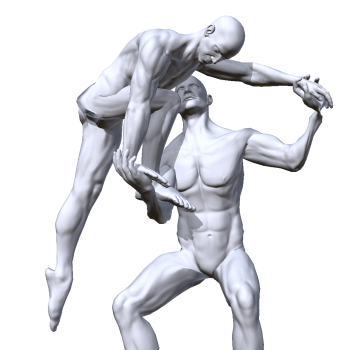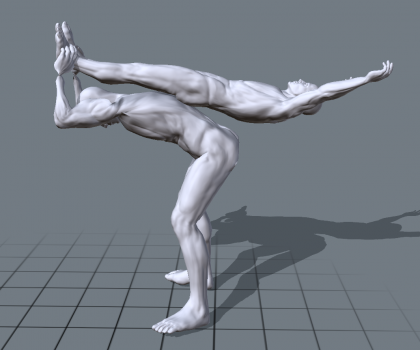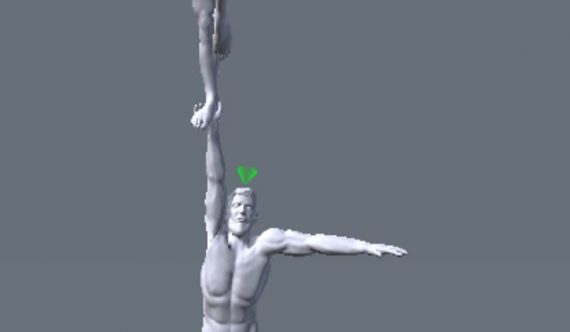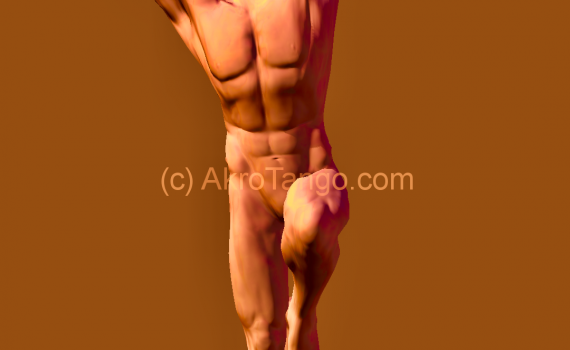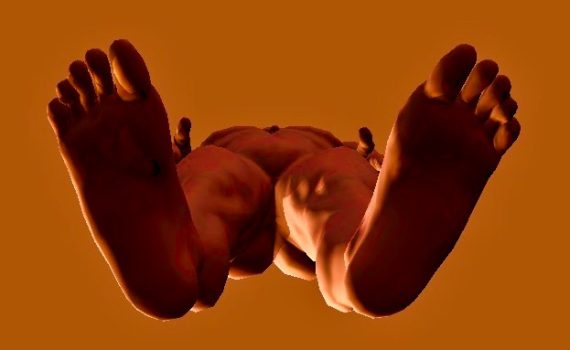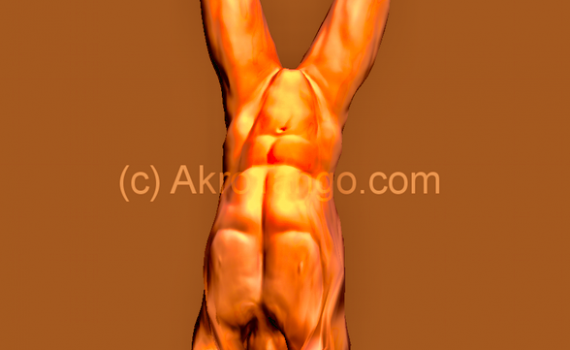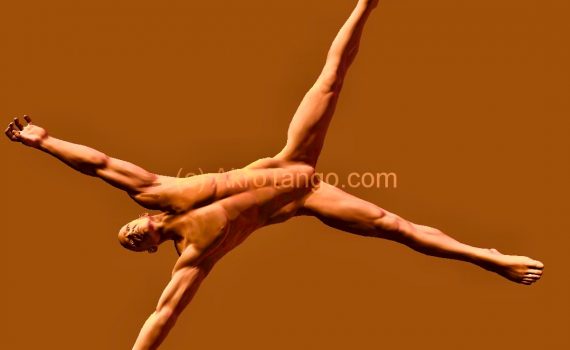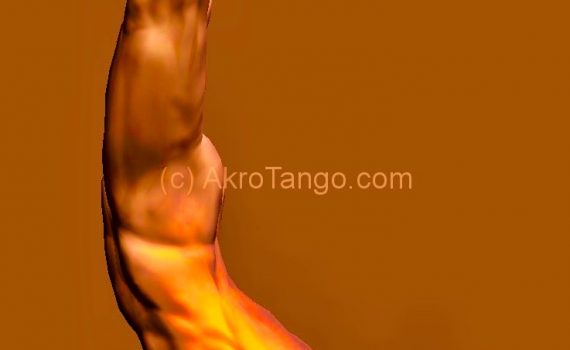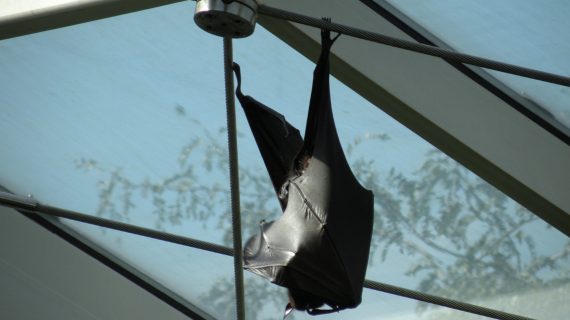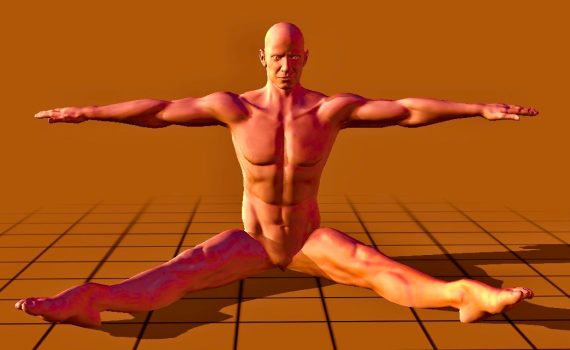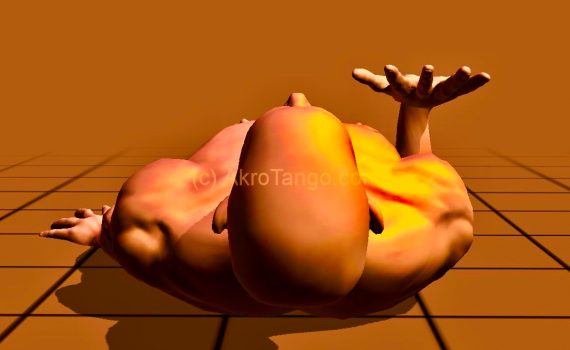The Courbet (Flac) is a trick from the category for experts. This trick starts for the flyer in the handstand and ends when standing in the hands. If the trick is caught on straight arms, it’s a trick for professionals, as you rarely see it in the circus. In principle, the Courbet is the second part of the flicflac, which is why this trick is more and more often called flac. Strictly speaking, the Courbet is only a section of the flac, namely the active leg pull just before standing. Unlike the flac, the flyer for the Courbet (in the partner […]
Kategorie: orange
The Posechka is a trick from the category for experts. Where the term Posechka comes from is probably a myth. The best tip seems to be, that some Eastern European brought this trick to Germany about 30-40 years ago and called it “Posetschka”. Google only offers a Bulgarian translation, which tells us that Posechka means “sober”. Posetschka is not known by Google and Posedchka means saddle, which also does not make more sense!? In German, I prefer to use the term “reel-up”, which at least meaningful describes the type of movement to the handstand. Nevertheless, there are many acrobats who […]
Pitching to handstand using the wheel turn is a trick from the category for experts. Off the ground, it’s one of the easiest possibilities to a handstand on straight arms, as the base easily controls the shearing forces of the flyer. Furthermore, the energy from the legs of the flyer (with maximum torque while stretching) helps to push the handstand comparatively effortlessly on the straight-arm. As pre-exercises I recommend: the wheel-turn to the handstand for the flyer on the floor with the belly to the wall. The start position is as close to the wall as possible with the left […]
The butler is a trick from the category for experts. With potential for long arms and thus even a trick for professionals … As pre-exercises I recommend: the base pulls up the flyer while doing the handstand on the floor (picture 1) and gets him back on his feet in front of him (pull over) the flyer jumps on the trampoline from the supine position back to standing, the lying base kicks the flyer lying backwards on the feet to the standing in the hands and the standing base pushes the standing flyer several times in a row on straight […]
Pitching is a trick for the good advanced, but can be increased to any difficulty as desired. As preparation I recommend: the flyer jumps up from the side (lying base) with a quarter turn to the one-legged standing onto the one-armed at straight arm, the flyer jumps up from the front (kneeling base) with a half turn to the one-legged standing onto the one-armed at the short arm and the flyer jumps up from the front (standing base) with a half turn to the standing on the hands with straight arms. This trick starts in the deep squat for the […]
The pitch to counter handstand is also for experts always a challenge… Starting position: The partners stand in front of each other and hold hands. The hands of the flyer are turned outwards, those of the base grip them from below, suitable for the planned final position, the counter-handstand. After the initial tempo, in which the base follows the flyer, the flyer jumps off active and slightly leaned forwards (picture 1). As soon as the contact point is under his center of gravity (picture 2), the flyer starts leaning even more forward (picture 3 = taking off pantyhose). High relieving: […]
The force line to the base runs through the hip and the center of gravity of the flyer. Otherwise arise very fast tilting and turning movements that are only with much experience to brake. This position should only be strived for if the flyer does no longer correct in the standing on 2 legs. For example, if standing on the straight-arm works fine. Initially, the base should use the 2nd hand for stabilization! He may achieve this, e.g. after he is bringing the feet of the flyer together and then grip with his free hand to the 1 leg. In […]
Since the base can not grip with the feet, balancing the flyer by using the shear forces is not possible. The base must always remain under the center of gravity of the flyer. In the position “headfirst” the base also has no line of sight to the flyer. This actually destroys almost all possibilities of balancing through the base. Either the flyer is so experienced that it remains in the line of force without causing any shear forces, or another base takes over the balancing… Standing on the head or shoulder, the line of power is distributed on 3 contact […]
When knot handstand one hand is further up and higher than the other! This results in an asymmetrical figure for the flyer (tends to be in the direction of screwed Einarmer), which affects up to the position of the feet. Important in partner acrobatics: – hands are on top of each other (watch out for your little fingers!) – the upper hand of the knot must not slip away – Both arms are stretched – the head is above the palm of the upper hand.
The flag is due to the pull-pressure balance a form of the libra. The flag in handstand tends very large shear forces to generate. therefore, it is for the base necessary to a very stable pressure point to offer. Unfortunately is not a base so stable as a pole … Since the pressure point is always below the pulling point, the 2 possible pressure points while the base is standing are the lower leg from the back or the thigh from the front. Thus the only possible pulling points left are the shoulder or the hand. Once the flyer gets […]
The throw is a dynamic trick in which the flyer has also be caught again, even if he lands on the ground. The throw bears much resemblance to a rocket launch … A jolt during the throw upsets and deforms the flyer. The result is shear forces that pull the flyer out of the line of force (→ a real rocket does not move a millimeter after ignition) Direction and rotation are initially the responsibility of the base, corrections of the flyer are not helpful (→ the rotation of the earth is an important component of the rocket launch) The […]
The position is similar to the scorpion-handstand of the flyer, as the head is actively pulled out. The beginning is usually via a libra, which at the end the flyer can let go, e.g. lying, sitting, with headstand or one-armed in the neck. An unfavorable weight distribution of base and flyer can be recognized by the fact that the shoulder is not over the middle of the hand. The base keeps his own center of gravity as close to its hands as possible (as he is usually heavier), which causes a barely avoidable hollow cross … Balancing the one-armed […]
In principle possible in the headstand, shoulderstand or handstand. Still not very advisable, as the balance organ really needs a very long time to achieve a stable balance with the head downwards. Everyone can estimate the effort themselves … How long did it take to stand a handstand? How much training was needed to balance him freely? And how long was the way to the one-armed? And now you want to balance a flyer on top of it? Even the one-armed handstand is easy in comparison to that!
In this position, the base has only one way to balance the flyer: With retracted chin directly over the neck (long neck). The base looks very grim, but can balance with the neck, if only very limited. In this variant, the base has no visual contact. Corrections come out of the middle of the body, so that the neck will not sheared A good preliminary exercise for the base is the free headstand on the ground. Well known circus duos are doing this one-armed handstand. This then turns 360 degrees with the flyer… very visible at the Peres Brothers (video […]
Not meant is a short-term one-arm balance due to a high relieve. However, as soon as the entire weight arrives on the arm, the risk of shearing is very great. This not only causes pain in the base’s wrist, but can also cause the flyers foot to kink away. If necessary, the base can lean the hand at the hip. Be sure to keep your elbows as close to the body as possible! I can only imagine of two sensible positions of the flyer: 1-leg standing one-armed-handstand In all other positions either the ground is too close, or the […]
